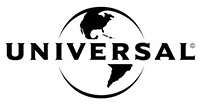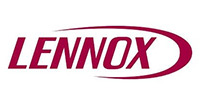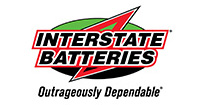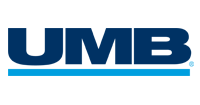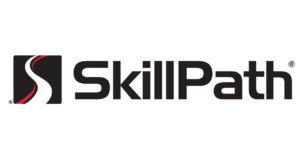Why Choose Vizion for Information Architecture & Taxonomy Design?
Our experienced, dedicated team of digital marketing and web design experts can analyze and design a custom information architecture (IA) and taxonomy for your website. Properly structured information architecture organizes the products, services, and content on your website, helping to create site navigation structures while also optimizing for search. The resulting taxonomy is a blend of how you refer to your content and how visitors search for and interact with your content and your brand. IA and taxonomy design services from Vizion allow you to grow your website without involving major overhauls, which are time-consuming and costly.
Rather than offering cookie-cutter services that do not take your company’s unique needs into account, we implement a fully customized, data-driven approach that helps you achieve your business goals and puts you on the path to success. When you work with us, you are not viewed as simply a client but recognized as a valuable member of our team, and no project is considered complete until you are completely satisfied with the results.
Our Strategy
Vizion understands the unique challenges business owners face to successfully promote their brand and engage prospects. When it comes to designing the information architecture and taxonomy for your website, we will work with you to develop a precisely tailored strategy based on the specific needs and goals of your business to ensure the success of the project.
The key to a successful taxonomy is its ability to accurately represent the content on your site by organizing content into topical and logical groups to optimize both user experience and search engine crawlability. When managing the redesign, we make sure to leave room for future expansion so your site can accommodate growing business or reflect the changing preferences of your consumers. And since Vizion also offers SEO services, we can optimize the terminology to help drive organic traffic to your site.
Our Process
The specific steps that we take can vary from project to project, but we always take a tailored approach to information architecture and taxonomy design that emphasizes the unique needs and goals of your business.

Onboard
The Vizion strategy for information architecture redesign begins with a discovery call where we will review your needs, determine your goals, and choose specific elements to include on your pages. We will discuss our strategy for taxonomy optimization and IA improvement and set up project management to accomplish your goals. This call offers the opportunity to ask questions about our process, share concerns you may have about past or ongoing work and learn more about how our team can meet the needs of your business.

Audit
In the audit stage of your informational architecture redesign, the Vizion team will complete extensive research, review the structure of your current site, and assess the performance of your IA and taxonomy. We gather information about industry keywords that rank highly in search results pages, keywords that your brand ranks for, and keywords that competing brands rank for. We also pull additional keywords related to your company, services, or location and include them in your SEO strategy.
Next, our team will conduct navigation menu and URL structure reviews. A navigation menu review assesses your site’s current navigation menu on the header and footer to ensure it is concise, descriptive, located in the optimal position on your website, and clearly communicates the structure, organization, and focus of your website. We ensure that the structure of your URLs is logical, clearly describes the content of the page, and includes SEO-friendly keywords so search engines can successfully deliver visitors to your pages when they make relevant queries.

Review
After your site has been successfully launched, Vizion will provide a comprehensive 30-day read-out report that demonstrates how changes to your site’s IA have affected the organic and overall performance of your site. We will continue to offer ongoing guidance regarding your IA and make it easy to make updates to refine your strategy as your company grows.
FAQs
What Is Information Architecture?
Information architecture refers to the practice of labeling, structuring, and organizing the components of a website to enhance findability, functionality, navigation, and user experience. The goal of information architecture optimization is to consider the information needs of your target audience as well as the products and goals of your business to ensure visitors to your website can find what they are looking for easily and with minimal effort.
What Is Taxonomy in Web Design?
In website design, taxonomy refers to a classification system that logically categorizes and organizes the content on a website to make it easier for visitors to navigate the site and find the information they are seeking. It provides users with relevant content related to what they are already viewing, enhances user experience, and allows search engines to efficiently crawl and index the pages on a site, increasing search engine rankings and brand awareness.
Why Should You Restructure Your Website?
If any of the following circumstances apply to your business, you should consider restructuring your website:
● You are not receiving the results you want or making progress toward your goals.
● Your site is not fully functional.
● Your site provides a poor experience for users, meaning they cannot effectively navigate your site and find the information they are looking for.
● You have a high bounce rate.
● The purpose of your website or marketing campaign has changed.
● The demographics and needs of your target audience have changed.
● Your branding is no longer accurate.
● Your site is not mobile responsive.
● You want to create a new or more comprehensive content strategy.
● Your competitor changed their website, and it decreased your search engine ranking.
● Your site features outdated tools or technology.
Why Does URL Pathing Matter for SEO?
URL pathing improves your SEO by increasing functionality, enhancing user experience, and improving the visibility of your site on search engine results pages. A well-designed URL structure is concise, organized, and consistent, features high-value keywords, reduces bounce rate, enhances security, and prioritizes the credibility and trustworthiness of your site.
How Can I Optimize Information Architecture?
Information architecture optimization requires the following steps:
1. Define the goals of your business, such as driving traffic or increasing sales.
2. Define the goals of the people who will be using your website.
3. Analyze the IA of competing brands, such as what information they display, where they display it, whether the site is easy to navigate, and the strengths and weaknesses of their strategy.
4. Determine how accurate, useful, and effective your web content is and whether you should continue to include it on your site.
5. Prioritize content and group it into categories based on similarities.
6. Create a sitemap and navigation menu.
7. Conduct user testing to find out if your redesign works and identify areas for further improvement.
Featured Clients
“Our old site was content rich but poorly organized and extremely difficult to manage. Since our new website launched, we’ve seen months with a more than 400% year over year leap in organic traffic. We can now accurately track conversions and ROI, manage the site, and have proven a strong return for our investment on the project. The numbers speak for themselves. Such a dedicated team is hard to come by. Vizion went the extra mile to ensure we met crucial time lines for launch, working around the clock when necessary. We would not hesitate to recommend this company.”
 Rob Haines Marketing Manager | Service Experts
Rob Haines Marketing Manager | Service Experts
Transform your IA and taxonomy efforts into profits.


